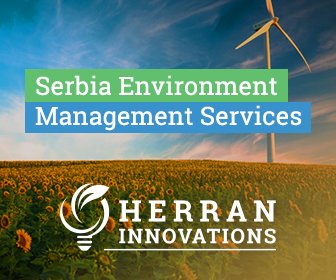Innovations in agriculture are being driven by smart AI technologies developed by researchers from Wageningen University (WUR), such as Bram Veldhuisen and Anja Dielemann. These technologies are aimed at making agriculture more sustainable, improving yields, and reducing labor dependency.
Artificial intelligence in agriculture
AI offers solutions in various areas of agriculture, explains Bram Veldhuisen, a researcher in precision agriculture and agro-robotics. AI can be used to recognize weeds, harvest crops, or identify the ripeness of fruits. Machines can be trained to distinguish between potato plants and weeds, or determine when fruit is ripe for picking. These technologies are useful because tasks like these are often done manually, which is time-consuming and labor-intensive. While human eyes can miss certain details, smart systems equipped with cameras and sensors can detect far more.
Smart tools for improved precision
A significant challenge in applying these AI technologies is ensuring the reliability of smart systems. Veldhuisen emphasizes the importance of “smart tools,” which are integrated systems in machines or robots that can verify their own work. For instance, a robot designed to remove weeds must ensure it doesn’t accidentally uproot the crops. Similarly, during fruit harvesting, it’s essential for the robot to pick only ripe fruit, not prematurely or overripe ones. These smart tools can identify when the task is performed correctly or when human intervention is necessary.
Automatic error warnings
Currently, AI applications in agriculture are still evolving. At WUR, projects like Robs4Crops are working on systems to ensure better error detection in agricultural processes. For example, a camera system developed for a beet hoeing machine helps track the number of plants in the field, sending an alert if discrepancies are detected. Such systems can be extended to other processes like sowing, where control mechanisms can be designed to replace human oversight.
Smart harvesting robots
In other initiatives, WUR researchers are developing robots designed for smart harvesting. For example, they’ve created a robot that harvests broccoli, equipped with a camera to determine when the broccoli is ripe for picking. Similar robots are in development for harvesting other crops, such as peppers. The Next Fruit 4.0 project focuses on developing robots for fruit harvesting, which is more complex since fruits, like apples and pears, are more delicate and require careful handling to prevent damage during harvesting.
Autonomous greenhouse production
AI also plays a crucial role in greenhouse production. Anja Dielemann, a researcher in plant physiology, explains that autonomous production in greenhouses involves remotely managing cultivation. Sensors and cameras are used to monitor climate conditions, plant development, and pest/disease presence. Using this data, manufacturers can adjust conditions such as temperature, watering schedules, and harvesting times.
Digital twins and intelligent algorithms
In the AGROS project, WUR is working on creating autonomous greenhouses. The second phase of the project is focused on developing mobile camera systems to measure plant growth more accurately. By utilizing digital twins based on mechanistic models and intelligent algorithms, these systems aim to enhance the efficiency of autonomous production.
Challenges in achieving full autonomy
While progress is being made, full autonomy in greenhouse production hasn’t been achieved. According to Dielemann, crop management is more complex than climate control, requiring feedback from plants to determine the optimal times for watering, spacing, or harvesting. Although great strides have been made in climate control, challenges remain in achieving full autonomy in crop management, particularly in measuring subtle aspects like the number of new leaves on a plant.
Farmers’ readiness for smart technologies
Both Dielemann and Veldhuisen agree that farmers are interested in smart technologies, particularly for improving yields and addressing labor shortages. Fewer workers are willing to do physically demanding farm work, making automation a crucial solution. Moreover, as awareness of agriculture’s environmental impact grows, smart technologies that optimize the use of energy, water, and nutrients are becoming increasingly appealing. Additionally, replacing harmful pesticides with environmentally friendly methods, such as laser weeding, helps reduce agriculture’s negative impact on the environment.
Risks of increased autonomy
Despite the benefits, increased automation comes with its own set of risks. Dielemann warns that remote crop management relies heavily on data accuracy. If a watering system malfunctions or drainage gets blocked, the data could be incorrect, potentially harming the crops. Veldhuisen highlights the issue of cybersecurity—hacking into an autonomous system could cause significant damage to the crops or entire farming operations. Furthermore, autonomous machines must move safely, similar to the developments in autonomous vehicles. The key challenge is proving that these innovations work effectively in practice.
Overall, while the level of AI-driven autonomy in agriculture continues to grow, it remains a work in progress, requiring careful integration of smart technologies and addressing the associated risks to ensure successful implementation.









